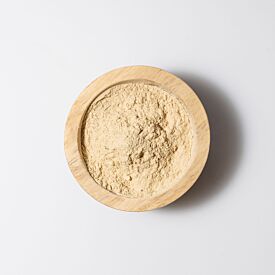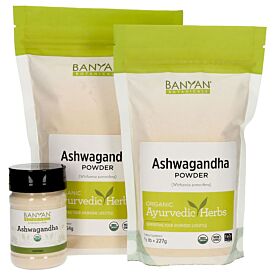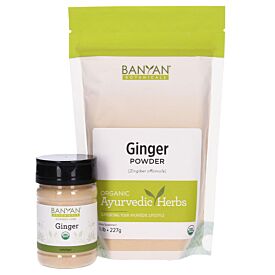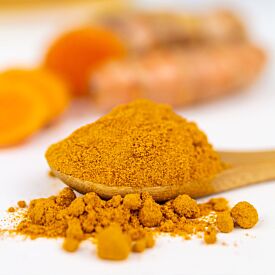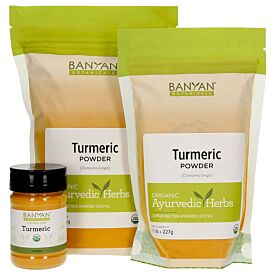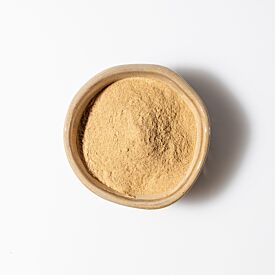Post-Workout Ayurvedic Smoothie Recipe
Smoothies have become so synonymous with health and fitness that it’s hard to picture not drinking a smoothie in the morning after an exercise routine. The “smoothie after workout” ritual is a convenient way to get a lot of nutrients at once and can serve as a great workout recovery drink. But when we consider what Ayurveda teaches us about digestion, along with what we know about our body’s response to exercise, we might change what we are tossing into the smoothie blender. The idea of enjoying a smoothie post-workout doesn’t have to be abandoned, but some recipe tweaking that takes our digestion, nervous system, and tissue rebuilding into account can show us how to make a smoothie that better supports our post-workout experience.
Are Smoothies Healthy?
You may be wondering if smoothies are bad for you or if they are inherently unhealthy. Let’s approach this issue from an Ayurvedic standpoint. Ayurveda teaches us that most substances can be either helpful or harmful depending on the circumstances in which they are taken. For this reason, it is important to examine what the body is experiencing during and after a workout session, and to consider the vata dosha.
Even though we engage in physical activity intentionally, our nervous system reacts to exercise in the same way that it does to stress, emergencies, or trauma. Our sympathetic nervous system, the division responsible for “fight or flight,” kicks into action, causing a few things to happen:
- Our heart rate, blood pressure, and respiration increases.
- Thinking we are in danger, our body begins to prioritize the action of our muscles so that we can evade the perceived threat.
- Simultaneously, our body assigns lower priority over our digestion and immune system.
- Vata, the ether and air elements, increase within the body.
- Our agni or digestive fire decreases.
When we are done exercising, our body does not immediately come down from this sympathetic high and likewise, it takes time for our body to once again prioritize other functions, such as digesting food. This is all okay because slow transitions rather than abrupt changes are preferred. Still, it is primarily for this reason that eating immediately after exercise is not recommended. And when we are ready to eat, we must be cautious of our food choices so that we don’t further dampen our digestive fire. This is where some traditional smoothie ingredients are called into question.
Smoothie Ingredients & Food Combining Rules
Many smoothie recipes, “healthy shakes,” and other blended protein drinks call for combining food items that will not digest compatibly. For instance, if we make a fruit smoothie made from frozen fruit and ice, the cold will hinder our already weakened agni. Just as common, bananas are blended in alongside leafy greens, proteins, and fats due to taste or texture preference. While the heaviness of these foods can be grounding to our stimulated vata dosha, this food combination can be taxing on our digestive system in that fruit has a quick digestive time, and raw greens, protein powders, or nut butters are harder to process. Their incompatibilities mean we may not receive the nutrients from the food as we intend and that we can be left with indigestion, gas, and bloating.
Once we have settled from our workout rush and our body has moved into parasympathetic or “rest and digest” mode, we are ready for our post-workout fuel. This can be in the form of a smoothie, but we simply need to be sure we allow at least 30 minutes after exercise and that we take time to consider the ingredients beyond a micro and macronutrient perspective.

How Do You Make A Smoothie Ayurvedic?
Here are some tips to guide you when selecting ingredients for your next blender creation:
- Choose foods, spices, or herbs that ignite your agni rather than extinguish it. This can be done by avoiding ice or frozen ingredients or by adding something that is both tasty and able to boost digestion such as ginger, lime, cardamom, fennel, cilantro, or cinnamon.
- Reduce food combinations that are taxing on your digestive system. There is quite a list to consider but there are some biggies that might appear more frequently in your smoothie. For digestion to be as ideal as possible, avoid yogurt, fruit, and dairy. These three things digest best when they are consumed alone.
- Include herbs and spices that support a healthy inflammatory response but continue to encourage circulation. Your body may experience a low level of soreness after exercise, but that is not all bad. In fact, it is the first phase of the healing process. What you do want to avoid is an overwhelming inflammatory response that may lead to lasting soreness or pain, especially if it keeps you from your normal daily activities. Turmeric, ginger, and aloe are a few to keep in mind that can do this trick.
- Add foods, herbs, and spices that help to rebuild tissues and support your immune system. Not only do you want to be sure that you are working to rebuild the muscle tissue that experiences tiny trauma when you exercise, but you want to be sure that you are building your health reserves, immune system, or ojas in general. Having strong ojas, or vitality, means that you can bounce back from stressful situations in a more seamless way. Some foods that have a good reputation for aiding this process are dates, almond milk, sesame, and ghee. Herbs that have outstanding rapport are shatavari, ashwagandha, amalaki, and the Ayurvedic jam, Chyavanprash.
- Select foods that ground and calm your nervous system. Something sugary or caffeinated could be tempting after a workout if your intention is to consume a smoothie for energy increasing purposes. But if you recall, your nervous system was already ramped up during exercise. Adding cooked pumpkin or sweet potato to a smoothie could be a creative and delicious way to anchor post-workout.
- Remember, you need to rehydrate. It may seem like a no-brainer, but you don’t want to overlook the fact that your body may have lost a great deal of water through sweat and respiration. Water is of course the obvious answer, but also consider making a smoothie with coconut water. It’s loaded with electrolytes. Note that guzzling liquids, including your smoothie, isn’t recommended, but rather taking small sips. This allows for better absorption of your liquids and supports your agni.
To jump-start your new post-workout smoothie making routine, try the recipe below. Make as is, or include ingredients from the ideas listed above. Happy blending!
Post-Workout Smoothie
Prep time: 10 minutes (some advance preparation required)
Serves 1
Ingredients:

- 8 ounces homemade almond milk*
- 4 ounces coconut water
- 1 teaspoon honey
- 1/4 teaspoon turmeric powder
- 1/4 teaspoon ginger powder
- 1 teaspoon sesame seeds + a pinch
*requires preparation one day ahead
Directions:
Place coconut water and homemade almond milk into blender and combine. Add honey, turmeric, ginger, and sesame seeds and blend until smooth and frothy. Serve sprinkled with a pinch of sesame seeds.
How to Make Almond Milk:
Prepare homemade almond milk by adding filtered water to 1 cup of almonds (enough water to cover by an inch) and soak overnight or at least eight hours. Drain the almonds and add 3 pitted dates, 1 teaspoon of vanilla bean powder, pinch of sea salt, and 4 cups of filtered water to a blender. Blend on high until smooth, noting that some almond pulp will remain. Use cheesecloth or a nut milk bag to strain. Homemade almond milk keeps for up to four days when refrigerated.






